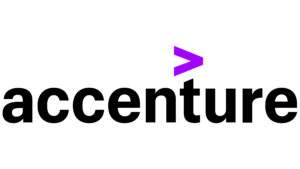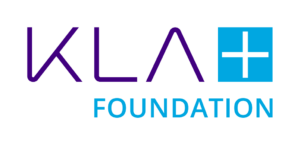
On March 18, 2021, in a dynamic virtual experience presented by headline sponsor Accenture, CHM celebrated Raymond Ozzie for a lifetime of work in collaborative software and software entrepreneurship. Perhaps best-known as the creator of the much-loved, early collaboration software Lotus Notes, he also built a number of other companies and succeeded Bill Gates as Microsoft’s chief technology officer. The first of four Fellows to be honored this year, Ray Ozzie joins a distinguished group of tech pioneers who have been inducted into CHM’s Hall of Fellows over the last 30 years.
Accessible to a global audience for the first time, the virtual program drew attention to Ozzie’s significant contributions in computing history, explored how they’ve manifested in our digital present, and looked ahead to the future. Along the way, we heard from those Ray has touched with his kindness, empathy, integrity, leadership, and, oh yes, skills as a technologist. Mark Cuban, Bill Gates, and Mitch Kapor shared memories and tributes along with countless friends and colleagues in a very active chat feed.
In case you missed it, here are some highlights from the show. Enjoy!
Ray credits the opportunity to use the computer-based teaching system PLATO at the University of Illinois in the early 1970s for sparking his life-long passion for technology and what it can do to bring people together. PLATO (Programmed Logic for Automatic Teaching Operations) gave him a glimpse into what the internet would become, with online gaming, discussion, community, and collaboration. He also had a life-altering experience collaborating remotely through PLATO with a fellow programmer who, Ray learned later, was a quadriplegic using a stick to type. Ray saw the potential of computers as different—and special—communication tools.
Ray describes how his experience with the PLATO system inspired his career.
One of Ray’s first jobs in the early 1980s was at startup Software Arts, which produced Visicalc, the first spreadsheet application for personal computers. Cofounders and 2004 CHM Fellows Dan Bricklin and Bob Frankston were brilliant technologists, but more importantly for Ray, they ran the company as a family. He felt as if people cared about each other, there was no infighting, and everyone was moving in the same direction together through the ups and downs. Dan and Bob were also very generous with introductions in what was then a very small industry. It was through them that Ray met Microsoft cofounders Bill Gates and Paul Allen and Apple cofounder Steve Jobs and his team.
Dan Bricklin offered a tribute to Ray, noting his commitment to getting into the messy details and solving hard problems to build solid foundations for products, companies, and communities.
CHM Fellow Dan Bricklin offers a tribute to Ray Ozzie.
Ray’s Lotus Notes, built in the late 1980s, was asynchronous, distributed computing with public-key encryption and security built into the design of a robust, enterprise level system. For decades it prompted users to greet “breakthrough” products and features with, “Notes had that!” Notes was a catalyst to the rapid adoption of the web and internet as we know it.
For most of his career, Ray worked for commercial enterprises, but the largest startup he founded was Groove Networks, which developed collaboration software. Microsoft bought the company and used the technology for SharePoint. Ray sees it as a great learning experience because he had to develop not only the technology, but also the go-to-market strategy.
Not many people know about Safecast, but it has created the largest citizen-science data set in existence today. Ray talks about its origins in the aftermath of the tsunami that resulted in the Fukushima nuclear disaster in Japan. The Safecast experience morphed into Ray’s current company, Blues Wireless, which develops small connected devices to embed in products to gather transparent feedback from customers.
Ray describes developing smart tools to help after the Fukushima meltdown.
When Ray’s company, Groove Networks, was bought by Microsoft, Ray became a chief technology office at the tech giant. A few months later, when Bill Gates left to devote his time to his foundation, Ray split his role with Craig Mundy, and became Microsoft’s chief technology officer, where he learned firsthand about change management in a very large organization. His colleague and now Microsoft vice president of AI and research, Lili Cheng, shared her experiences working with Ray.
Lili Cheng offers a tribute to Ray Ozzie.
Lili Cheng believes that Ray’s willingness to listen, the way he builds teams, how he thinks about and lives communication, his character and spirit all contribute to his innovative style and manifests in the products he builds.
Ray offered his own tribute to the incredible people in the tech industry, who he has learned from and watched pay it forward. He is most proud, he says, of how his successful companies and products have supported and affected people in their ecosystems as customers, suppliers, and employees, allowing them to earn money to put their kids through college, meet spouses at work, or touching their lives in an indirect way.
Ray is excited about the future, focusing on opportunities for IoT technologies (internet of things) to help us monitor and understand our environment to make it better by identifying polluters, for example, or to connect people with assets and supply chains that are visible and improve customer service. He believes the pandemic accelerated fundamental changes in how we work, in healthcare, in financial systems, and more, providing opportunities for entrepreneurs to change the landscape of the future.
As we think about that future, Ray offered a look back at his private collection, reminding us where today’s technologies came from.
Ray gives a tour of his collection of computing artifacts.
Ray Ozzie has devoted his life to building software and companies that connect people, helping them to collaborate for the greater good. His innovations underpin many of the technologies that shape our lives today. Where did his passion and energy come from and where did it take him? Ray tells us in his own words.
Ray Ozzie: A mini documentary
Two special guests offered their tributes to Ray and personal stories about him. The first, a billionaire today, said that Ray saved him from becoming a bartender.
Entrepreneur and investor Mark Cuban offers his tribute to Ray Ozzie.
The second special guest, a tech wunderkind, remembers Ray’s phenomenal recall of the digits of Pi.
Microsoft cofounder Bill Gates offers his tribute to Ray Ozzie.
Lotus cofounder and CHM Fellow Mitch Kapor, who hired Ray and invested in Lotus Notes, presented the award. He believes that Ray’s integrity and their trust in each other were fundamental to their relationship and made all things possible.
Entrepreneur and investor Mitch Kapor presents the Fellow Award to Ray Ozzie.
Accepting the award, Ray thanked his “one of a kind” wife, Dawna Bousquet, for always pushing him in the direction of what makes him happy rather than the easier path, risking failure as a serial entrepreneur over the decades. Ray described how his future career was shaped in childhood in his grandfather’s workshop.
Ray describes how his grandfather and father taught him to build.
After offering his gratitude to all those who taught him technology and leadership skills, inspired him to consider the impact of innovation, and instilled in him the idea that no vision is too large to be realized, Ray offered priceless advice to young people. Building can be the purest form of activism.
Ray explains why building is the purest form of activism.
With those inspiring words, the audience was invited to join in a unique demonstration of tech collaboration in the arts. The world’s first beatbox champion, Butterscotch, used words from the audience in real time to compose the lyrics of an inspiring new song with a vision for the future.
Building a Better World: An original composition for Ray Ozzie.
A panel discussion moderated by legendary tech journalist and Editor-at-Large for Wired Steven Levy explored issues and implications today of the connectivity revolution that Ray helped bring into being. The panel included Microsoft Partner Researcher, founder of Data and Society, and visiting NYU professor danah boyd; tech media pioneer Esther Dyson; and Emmy-nominated writer, comedian, and activist Baratunde Thurston.
“He didn’t just do collaboration software, he actually collaborated,” said Esther Dyson of Ray Ozzie. “And, he understood that he was building the structure around collaboration among people.” But, while connectivity has given us so much, in another way we have a nightmare on our hands, noted Levy, asking the panel what have we lost from the early days of systems like PLATO. For Thurston, what’s at issue is the tremendous concentration of power.
Baratunde Thurston questions the power imbalance between tech and individuals.
danah boyd noted that the internet has always been used for both good and bad. Tech mirrors and magnifies the culture, which is constantly being made and remade based on the (tech) tools we have around us. We can not assume that tech tools will create the networks and the culture we want for a healthy society.
danah boyd describes how checks and balances are needed to realize the promise of tech.
Esther Dyson pointed out that human beings are vulnerable to short-term thinking, which may not actually serve us very well as a society. The internet creates a platform for everyone to be “racing faster,” but as a culture we need to think about how to get people to resist that and think more long-term, an issue that transcends the internet. Thurston argues that the individual can no longer “just say ‘no’.” It’s not a fair fight when a person is up against concentrations of computing power and financial power using applied mathematics and behavioral science to direct our actions to what is no longer a real choice. Democracy is messy and requires engagement and negotiation, not just clicking to opt out of it. And, listen to the people who are telling us that not everything is alright for them to make a system that’s better for everyone. Dyson had an idea for how that might work: letting people pick their own algorithms.
Esther Dyson explores the idea of people choosing their algorithms.
Ray Ozzie joined the panel to share his thoughts on the evolution of the connectivity revolution that he helped to spark. For him, it’s been both foreseeable in some ways and surprising in others.
Ray Ozzie shares his thoughts on the implications of his early work.
The panel as a whole echoed Ray’s hope that tool builders will work to solve the social and political problems that have developed as repercussions of the way that communications technologies have evolved. Thurston noted that the robots we feared have actually turned us into robots that serve them, with social norms mandating that we react to and manage data constantly and at high speed. Ray hopes that some entrepreneurs will start to experiment with other mechanisms and he believes the pandemic has created an opportunity for new perspectives on how we do our work, on social tools, organizational tools etc. danah boyd encourages technologists to resist designing for everyone and aim at those who resist. Esther Dyson encouraged using AI to fix problems, not mirror them. And, Levy concluded the panel by taking it back to PLATO, where it all began for Ray, hoping we can realize its vision to let us “be ourselves, connected.”
For all footage from CHM's March 18 event, “Building a Better World through Tech for Collaboration: A Celebration of Ray Ozzie,” video extras, and related content, visit our dedicated page to 2021 CHM Fellow Ray Ozzie.
About the 2021 CHM Fellow Awards
The 2021 CHM Fellow Awards marks the Museum’s first-ever virtual Fellow Awards. CHM will celebrate the 2021 Fellows in a yearlong four-part series of thought-provoking virtual events and engaging digital content that explores the story and impact of each honoree and the present and future of tech for humanity.
Learn more about this year’s honorees and the 2021 Fellow Awards.


